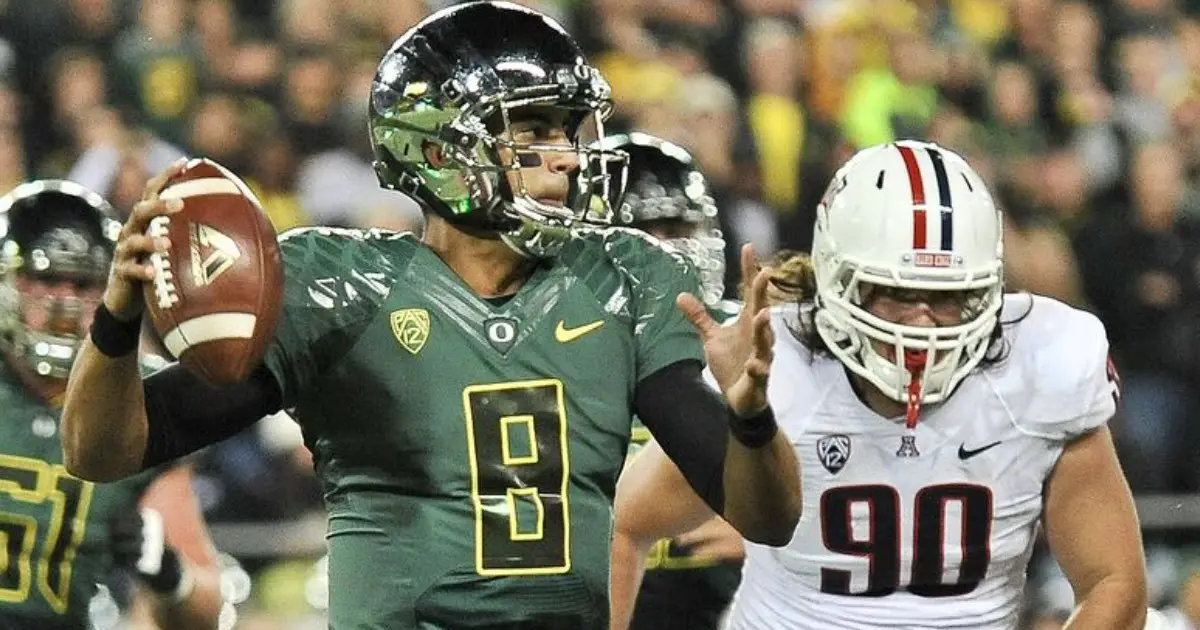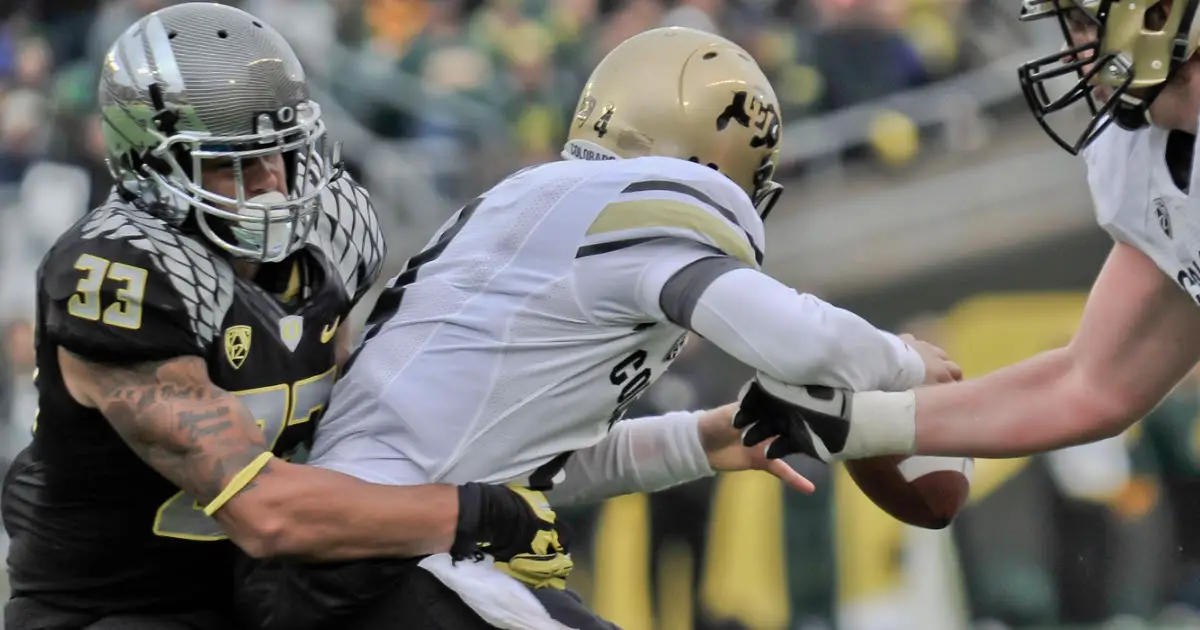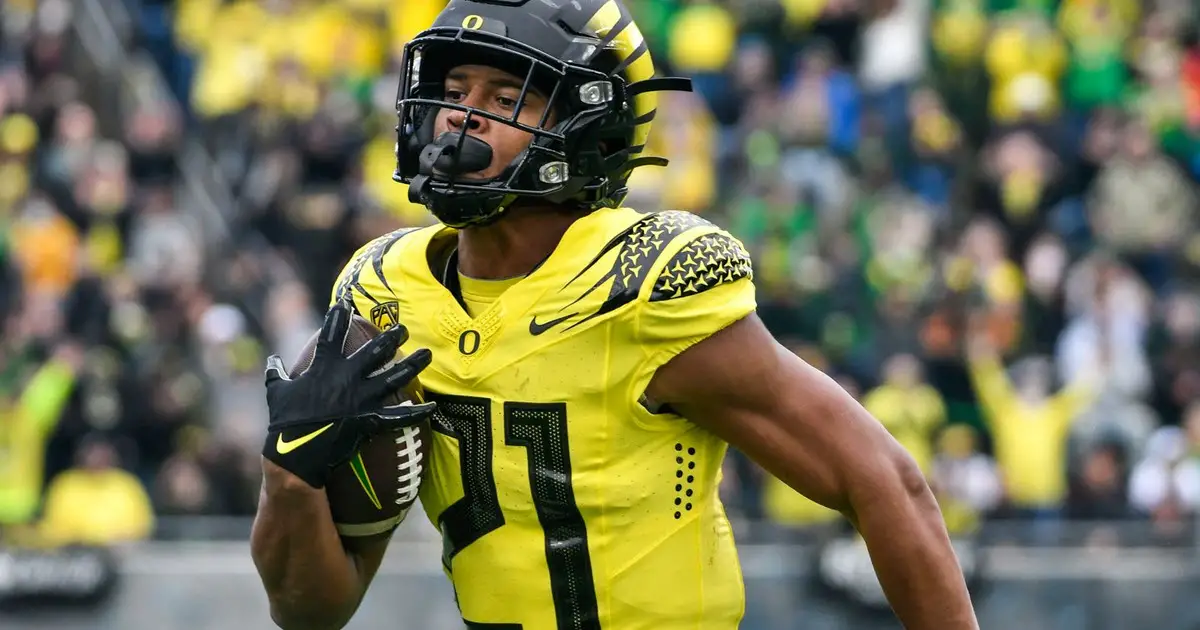Back on National Signing Day in early February, Offensive Coordinator Kenny Dillingham said that his Oregon offense is going to play fast and put up a lot of points, with the goal of running 80 offensive plays per game. Coach Eric Boles outlined what he thinks this up-tempo, pro-style offense may look like this upcoming year. No matter what this offense looks like, one thing is absolutely clear — getting to 80 offensive snaps per game isn’t going to be easy.
Since 2009 Oregon has only reached the 80 play marker once, and that was in 2012 when Oregon averaged 82 plays per game. During the peak Chip Kelly and Mark Helfrich blur offense era from 2009-2016, Oregon averaged 76 plays per game. These were efficient plays, as Oregon reached some of the highest offensive numbers not only in Oregon’s history but in College Football history. By contrast, the most plays per game in the Mario Cristobal era was only 74 in 2018.
In order to run 80 plays per game there is another factor at play in order to reach that lofty goal: the defense. There is a reason that, during the era of the blur offense, Oregon struggled to reach 80 plays per game. That is because there were enough games where UO struggled against ball control offenses.

Marcus Mariota and the 2012 Oregon Ducks team averaged the most plays in program history.
We all remember those Stanford games that resulted in some out-right frustrating losses, where Stanford controlled the ball for a vast majority of the game as we watched our Duck defense slowly give up field to Stanford’s power run game. Then on offense the Ducks suffered relatively quick three-and-outs, which gave the ball right back to the slow, clock-burning, Stanford offense. Those games ate up a whole lot of Oregon’s offensive opportunity to run more plays.
This was the case with many teams during that era, where Oregon would actually be losing at time of possession because the defense would constantly be playing a bend-but-don’t-break style of defense. Give up ground, and thus clock time, to ensure the opponent just scores fewer points than Oregon’s offense. It worked for the most part.
It is no coincidence that 2012, the year that Oregon did average 82 plays per game, also coincided with a strong defense that only surrendered 21 points per game. The defense got the ball back to the offense on a regular basis and allowed that high-powered offense to run even more plays. This was also a time where opposing offenses started to run with more tempo themselves, which resulted in opposing teams having less time of possession.

The 2012 Oregon defense stopped opposing offenses from scoring, which allowed for more plays.
The other two years in that time frame that Oregon got close to the 80 plays per game mark was in 2010 when Oregon made its first run at a National Championship. The defense held opponents to just 18 points per game and averaged 78 offensive plays per game. Then in 2015, when Oregon averaged 79 plays per game but the defense surrendered 36 points per game. This is the other way to increase the average of plays per game — by simply making every game a shoot-out.
With Dan Lanning as Oregon’s head coach we have all known that Oregon is going to have a strong defensive scheme. Lanning will look to form his Oregon team more in the mold of the 2010 and 2012 Oregon teams rather than the 2015 team, as a strong defense will be the backbone of his team.
Setting a goal for his offense to run an average of 80 plays tells us that he is also serious about the offensive side of the ball. This year in Georgia’s national title run, they only averaged 68 plays. Georgia proved this year that it is possible to win with a top notch defense and a heavy run game with strong ball control.

Noah Sewell will be a key piece of Lanning’s defense to enable his offensive vision.
However, Lanning also seems to know that he can’t replicate that at Oregon for two reasons. First, Oregon does not have anything like the defensive roster Georgia had last year that was loaded with massive five-star athletes. Oregon just doesn’t have the players needed to replicate those defensive numbers — though with this recruiting staff it may not be impossible for that to happen, but if it ever happens it will take years to achieve. Instead, Oregon must have a solid defense that can be aggressive and limit opponents in how many points they are permitted to score, and get the defense off the field quickly.
Secondly, Lanning seems to understand that Oregon was built on offense and fans want to see an explosive offense return to Oregon. The 80 plays per game marker screams an offense that can score lots of points and do so quickly. More importantly, in order to win big at Oregon, Lanning is going to need a strong offense — he cannot rely on the same model that won Georgia a National Championship. Oregon will need to score points and lots of them.
Will Oregon reach 80 plays per game this year? Probably not; only a handful of teams reach that marker every year and they usually have some pretty easy schedules on the whole. But the goal of averaging 80 plays a game means so much more. It means Lanning gets Oregon’s culture, and he wants to bring a strong offense back to Oregon — but it will also require a strong defense.
A strong offense and a strong defense at Oregon? That’s living the dream.
David Marsh
Portland, Oregon
Top Photo By Craig Strobeck

Natalie Liebhaber, the FishDuck.com Volunteer Editor for this article, works in the financial technology industry in Bozeman, Montana.

David Marsh is a high school social studies teacher in Portland, Oregon. As a teacher he is known for telling puns to his students who sometimes laugh out of sympathy, and being both eccentric about history and the Ducks.
David graduated from the University of Oregon in 2012 with Majors in: Medieval Studies, Religious Studies, and Geography. David began following Ducks Football after being in a car accident in 2012; finding football something new and exciting to learn about during this difficult time in his life. Now, he cannot see life without Oregon football.

